Welcome to Scenic Cruises Around the World – A Voyage Writer’s Journal
Cruise Life
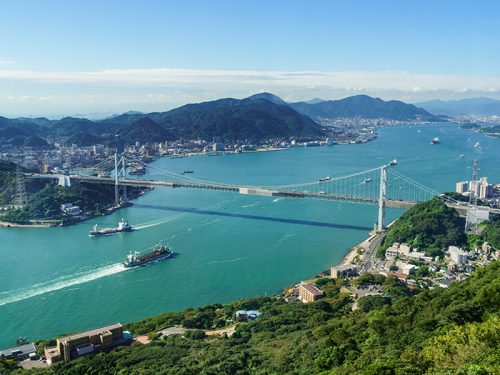
One of the best parts of a round-the-world cruise is the variety of ports of call. Meanwhile, scenic cruises are not to be missed. For example, fjords, glaciers, coral reefs, and other natural wonders are best viewed from the ship. Or, like the Kanmon Straits, located between the main island and Kyushu of Japan, where you can see two cities at the same time, one on each side of the strait. A scenic cruise is a voyage through these spectacular landscapes. Having sailed on five continents, I have experienced countless scenic cruises. Let us embark on a round-the-world cruise to connect some of the most memorable ones.
Text and composition: Kanamaru Tomoyoshi (Voyage Writer) A voyage writer who has cruised not only throughout Japan but also to the five continents of the world. He writes for “Cruise Ship Collection,” which introduces cruise ships from around the world, and contributes serial articles and cruise reports to the Japanese magazine “Cruise.”
A Canal Cruise: To the Mediterranean Sea with a view of Asia and Africa
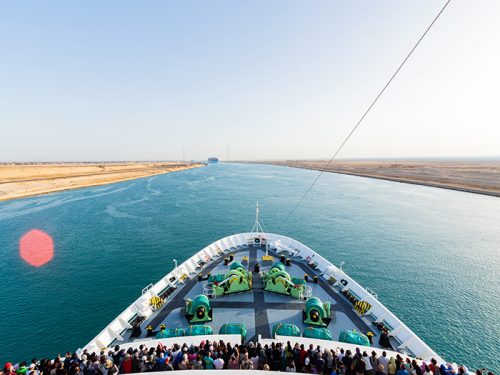
The Suez Canal is the turning point in a cruise ship’s westward journey through the Northern Hemisphere, as the ship leaves Asia. The ship passes through the canal with Africa on the left side and Asia on the right side, looking at the two continents at the same time. On the African side, a railroad line runs parallel to the canal, and villas of important people have been built. In contrast, the Sinai Peninsula on the Asian side is a desolate desert. Sometimes, sandstorms so fierce that one cannot even see one’s surroundings. The two sides of the Sinai Peninsula share a striking contrast in the sight of armed soldiers. The tension in the Middle East, where conflicts continue, is palpable. Eventually, we pass under the Egyptian–Japanese Friendship Bridge, also known as Al Salam Bridge, which was built with Japanese economic aid, and head toward the Mediterranean Sea.
A Radio Cruise: Enjoying Raido Broadcasts from Two Countries
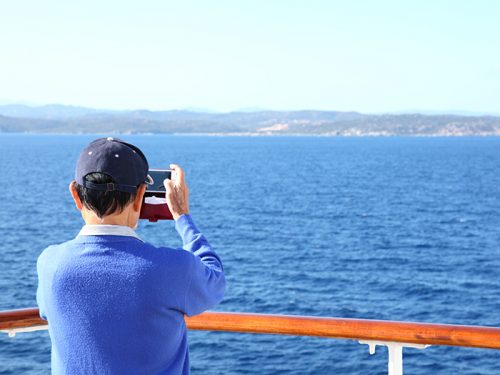
Whenever I go on a cruise, whether at home or abroad, I try to carry a small radio with me. On my way from Civitavecchia, Italy, to Barcelona, Spain, I sailed through the Strait of Bonifacio between Corsica (France) and Sardinia (Italy). Standing on deck with a radio, I pointed it toward Corsica on the right to hear languid French, and toward Sardinia on the left to hear lively Italian. It is a rare experience to see two different countries, but it is also a pleasure to enjoy a radio cruise while listening to the broadcasts and music of both countries.
A River Cruise: The Glory and Demise of Colonial Empires
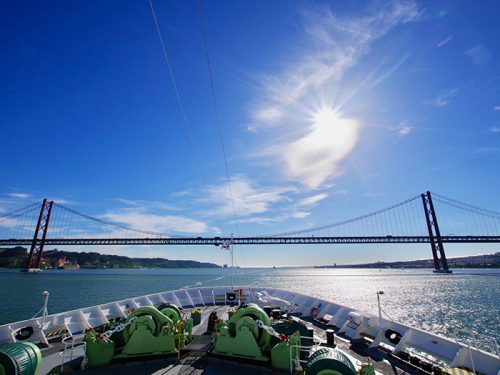
After crossing the Strait of Gibraltar, the ship entered the mouth of the Tagus River. As we sailed up the river, the Tower of Belém came into view on our left. This building, completed in the early 16th century, is a remnant of the glorious Age of Discovery that saw off countless Portuguese ships embarking around the world. Before long, we pass under a large suspension bridge named the 25 de Abril (April 25) Bridge, where on the same day in 1974, a group of revolutionary military officers won popular support and overthrew a dictatorship in a bloodless revolution. At the same time, Portugal put an end to its history as a colonial empire. Tracing such history, the ship arrived in Lisbon. On the day of departure, as we emerged from the Tagus River into the Atlantic Ocean, we saw the Tower of the Cross standing at Cape Roca, the westernmost point of the Eurasian continent.
Dramatic Scenes of Entering/Exiting Ports
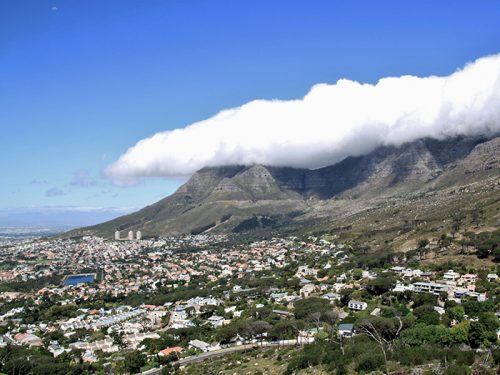
Which port in the Southern Hemisphere can we see the most dramatic departure and arrival scenes? There is no better port than Cape Town, South Africa. The trapezoidal Table Mountain and its horizontal cloud-covered peak. The ship sets sail, watched over by the blazing mountains bathed in the setting sun. Soon we see a flat island, Robben Island. It was once called Prison Island, where many political prisoners who demanded the abolition of the apartheid policy, including former President Nelson Mandela, were interned. The entire island is now a museum and is registered as a World Heritage site. The departure from the port beyond the Cape of Good Hope was a scene that touches on the progress of the Rainbow Nation, which was born after various hardships.
Views of two capital cities on the world’s widest river
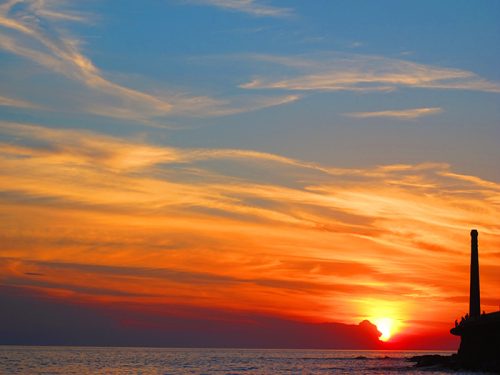
In South America, I had the experience of seeing the capitals of two countries in one day from a ship. We left Buenos Aires, the capital of Argentina, at noon and sailed down the La Plata River toward the mouth of the river. Even though it is a river, it looks like an ocean only because it is the widest river in the world at 275 km. Then, I saw a shining object reflecting the sun. It was the city of Montevideo, the capital of Uruguay. I looked closely, and sure enough, there were skyscrapers. Although this cruise did not stop at Montevideo, I felt as if I had also visited Uruguay. This is one of the secret pleasures of a scenic cruise.
Kilauea Volcano, Witness the heartbeat of the earth
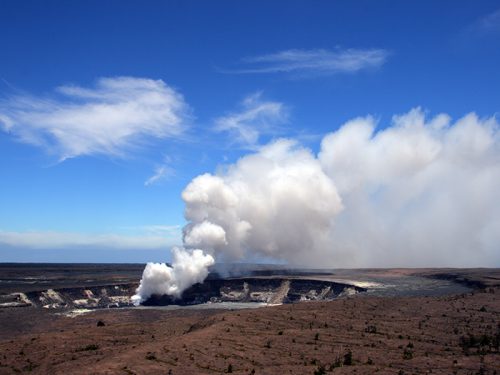
As we sailed along the Big Island of Hawaii toward Honolulu, we saw white smoke rising from the ocean. As we approached land, the smoke became larger and larger. The white smoke rising toward the sky was probably caused by the eruption of an underwater volcano. The hillside was covered with rugged rocks with no vegetation. It has an unusual black glow. This is the foot of Kilauea, one of the world’s most active volcanoes. The black paths that look as if they were the paths of rushing rivers are the traces of lava flows. Then, lava spewed by a new eruption flows into the path and falls into the sea. It was a powerful cruise along the coast of the Big Island of Hawaii, as if we were witnessing the heartbeat of the earth.
Scenic Cruise Finale in Tokyo
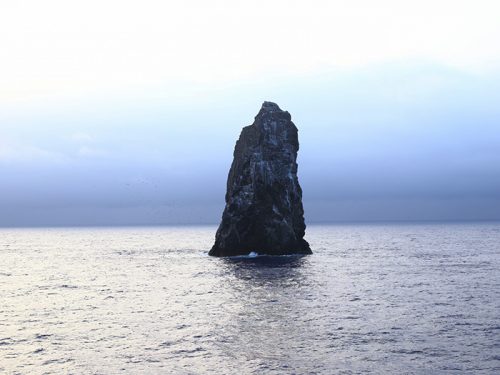
The cruise around the world will soon come to an end. I felt this way when I saw a strange 100-meter-high rock that looked like an index finger sticking out of the sea. Its name is Soufu Iwa, or Widow’s Rock. The name was given by an Englishman who discovered the rock in the 18th century, who named it after Lot’s wife, who disobeyed God’s instructions and was turned into a pillar of salt in the Old Testament. The name was translated into Japanese and became the current name. The rock belongs to Tokyo, Japan. It had been a long time since the ship left Japan. On the Olivia, the Ukrainian cruise ship on which I boarded at the time, the captain gifted us a circling around the rock in celebration of our return home. The finale of my round-the-world scenic cruise was in Tokyo.
PHOTO:PEACEBOAT, Isogai Miki, Nakasuji Kota, Okuhira Keita, shutterstock.com
